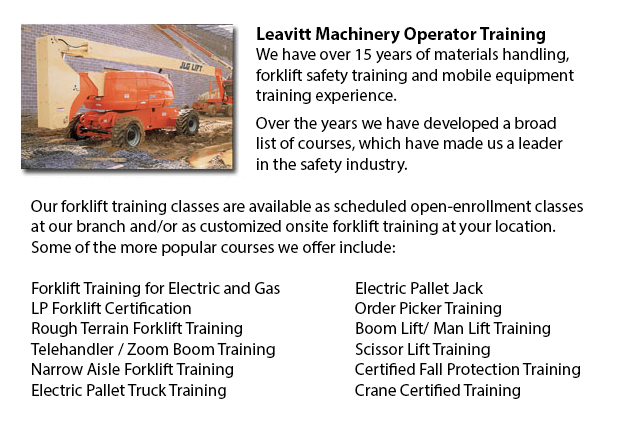
Barrie Boom Lift Safey Training - Boom lifts are a type of aerial lifting device or elevated work platform that are normally used in warehousing, construction and industry. Boom lifts could be utilized in virtually whatever surroundings because of their versatility.
Elevated work platforms enable personnel to access work places that would be unreachable otherwise. There is inherent danger in the operation of these devices. Workers who operate them should be trained in the proper operating procedures. Preventing accidents is paramount.
Boom Lift Training Programs include the safety aspects involved in using boom lifts. The program is suitable for people who operate self-propelled boom supported elevated work platforms and self-propelled elevated work platforms. Upon successful completion of the course, participants would be issued a certificate by an individual who is certified to confirm finishing a hands-on assessment.
Industry agencies, federal and local regulators, and lift manufacturers all play a part in establishing standards and providing information in order to help train operators in the safe use of elevated work platforms. The most essential ways to avoid accidents connected to the use of elevated work platforms are the following: performing site assessments; checking machines; and having on safety gear.
Important safety factors when operating Boom lifts:
Operators need to observe the minimum safe approach distance (MSAD) from power lines. Voltage could arc across the air to find an easy path to ground.
A telescopic boom should be retracted prior to lowering a work platform to be able to maintain stability when the platform nears the ground.
Boom lift workers must tie off to guarantee their safety. The lanyard and safety apparatus must be connected to manufacturer provided anchorage, and never to other wires or poles. Tying off may or may not be needed in scissor lifts, depending on particular employer guidelines, job risks or local rules.
The maximum slope would be specified by the manufacturer. Workers should avoid working on a slope, whenever possible. When the slope exceeds recommended conditions, the lifting device should be transported or winched over the slope. A grade could be measured with no trouble by laying a straight edge or board of at least 3 feet on the slope. Then a carpenter's level can be laid on the straight edge and the end raised until it is level. The percent slope is obtained by measuring the distance to the ground (also called the rise) and dividing the rise by the length of the straight edge. Next multiply by 100.
-
Barrie Warehouse Forklift Safety Training
Barrie Warehouse Forklift Safety Training - Businesses normally face liability for injuries and damage sustained in workplace accidents. Warehouses can be hazardous places to the individuals who work there. That is the reason why employee safety is a... More -
Barrie Aerial Platform Training
Barrie Aerial Platform Training - Aerial lifts can accommodate many duties involving high and tricky reaching places. Normally used to carry out regular upkeep in buildings with high ceilings, prune tree branches, hoist heavy shelving units or mend p... More -
Barrie Forklift Ticket
Barrie Forklift Ticket - Pallet jacks and lift trucks are both intended for practically the same reason; to transfer goods from one location of your warehouse to another. This is basically where the comparison stops however. With the pallet jack, the... More -
Barrie Aerial Lift Training
Barrie Aerial Lift Training - An aerial work platform is a mechanized access platform. This machinery provides access to otherwise not accessible places for people or equipment. Also referred to as an aerial device or elevating work platform, the mac... More -
Barrie Aerial Boom Lift Training
Barrie Aerial Boom Lift Training - For people who operate or supervise the use of aerial lift platforms, correct aerial boom lift Training is required. The aerial lift platform is utilized for lifting individuals, tools and materials to elevated work... More -
Barrie Manlift Certification
Barrie Manlift Certification - The Elevated Platforms and Manlifts Certification program helps to provide the needed training on the work practices, safe operating procedures, rules and regulations regarding the everyday activities for the operators... More -
Barrie Overhead Crane Certification
Barrie Overhead Crane Certification - The overhead crane training certification course is designed to be effective with all participants regardless of literacy or language limitations. The course has two parts: a classroom training session and a prac... More -
Wheel and Track Loader Training in Barrie
Lift trucks are obtainable in several various units that have varying load capacities. The majority of typical lift trucks utilized in warehouse settings have load capacities of one to five tons. Bigger scale models are used for heavier loads, such a... More

Forklift Certification Barrie
TOLL FREE: 1-888-254-6157
Barrie, Ontario
forkliftcertificationbarrie.com
Email Us
About Us


